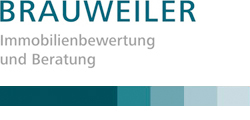International value determination
The most important valuation principles for British valuation methods can be found in the Red Book.
The market value (MV) is the equivalent of the German Verkehrswert (section 194 BauGB [German Building Code]).
The existing use value, a branch of MV, is used to value a company‘s business-related properties for accounting purposes.
The estimated realisation price (ERP) determines the value by estimating a probable future selling price bound with the statement on the period of when this determination was made. This is especially important for financing institutions with non-performing property loans.
A branch of ERP, the estimated restricted realisation price (ERRP) determines the value under the assumption that the seller does not have “sufficient” time for marketing.
Finally, the depreciated replacement costs are given that correspond to a “real value”.

Discounted Cash Flow
In the discounted cash flow (DCF), all future revenues and rent developments, the inflation rate as well as all expenses (e.g. modernisation, vacancies etc.) are incorporated into a review period (e.g. 10 years). The values are discounted from the valuation date with an appropriate interest rate and summed up.
According to the valuation’s aim, the investment’s capital value or internal rate of return can be determined.
Among others, the difficulties here include estimating the actual future income or expenses as well as correctly selecting the interest rates.

Market Value
The best price at which the property could be sold on the validation date without conditions and against cash payment, under the following prerequisites:
- There is a willing seller.
- There was a reasonable time period before the valuation date to properly market this kind of property given the existing market conditions as well as agreement on the price, the conditions and the transfer of ownership.
- The market conditions, the price conditions and other circumstances remained unchanged in the time between the signing of the purchase agreement and the transfer of ownership.
- Offers from buyers with special interests were not taken into consideration.
- Both parties have conducted themselves with knowledge of the market, prudence and without coercion.

Comparative Method
The Vergleichswertverfahren is the German equivalent of the British Comparative Method.
It is based on data or transactions that are comparable or have been made comparable. It is often used in valuating plots of land that have not been built on, individually used commercial properties as well as residential properties (e.g. terraced houses, freehold apartments).

Contractors Test
The contractors test is also known as cost approach or depreciated replacement cost. It is mainly used for valuations for the tax authorities or for accounting purposes
The value of a plot of land is determined from the sum of the land value and the costs that would be incurred for newly constructing a comparable building. However, reductions are to be made that correspond to the age, the structural condition and the reductions made due to the current buildings being no longer suitable for the current functional requirements.
More or less corresponding to German real value, this approach has, however, almost no importance internationally today.

Investment Method
The Ertragswertverfahren [income approach] is the German equivalent of the British investment method. It serves to valuate properties from a returns perspective.
This is different to Germany, here no comparison is made between the value of buildings and the value of the plot of land. In addition to this, it assumes perpetual annuity, meaning that the property has unlimited profitability.
Similar to the German income approach, the total rental income (without taxes and prepayments of auxiliary costs) is determined first. Non-recoverable operating costs are deducted from this. The obtained annual net income is reproduced with a multiplier that results from the rates of return from comparable transactions. In order to obtain the value of the property, the common market acquisition costs are still deducted, contrary to use in German valuation methods.
The “term and reversion” methods are known with under-rented properties as well as the “hardcore method” for over-rented properties.

Residual Method
The valuation of plots of land that have not been built on or less used areas, often leads to the valuation of a project to be built and the resulting value of the plot of land.
This classic “property developer method” assumes a ready-made building that can either be leased or sold. All arising costs, including for example production costs, financing costs and entrepreneurial profit, are deducted from the possible revenue. The remaining value is the maximum price to be paid for the plot of land.
The difficulty in determining a value arises for example in that the financing costs or entrepreneurial profit present no common values that are the same size for all market participants. This can result in a range of various residues.

